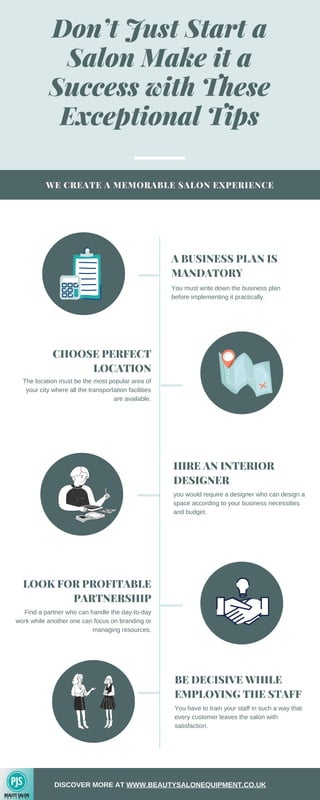Discover the untapped potential of your salon business with this ultimate guide to creating a winning marketing strategy!

Image courtesy of Asiama Junior via Pexels
Table of Contents
- Understanding Your Target Audience
- Setting Clear Marketing Objectives
- Developing a Brand Identity
- Online Presence and Digital Marketing
- Offline Marketing Strategies
- Building Client Loyalty and Retention
- Tracking and Analyzing Results
- Budgeting and Allocating Resources
- Staying Ahead of the Competition
- Conclusion
As a salon owner, you understand the fierce competition that exists in the industry. With so many salons vying for customers’ attention, it’s crucial to have a winning marketing strategy in place to stand out from the crowd and ensure the success of your business. Developing a well-designed marketing strategy can make a significant difference in attracting new clients, retaining existing ones, and ultimately driving profits. In this ultimate guide, we’ll walk you through the key steps to develop a winning marketing strategy for your salon.
Understanding Your Target Audience
Identifying your ideal customer: To create an effective marketing strategy, it’s essential to understand who your target audience is. Take the time to analyze and gather information about your existing clientele, including their demographics, preferences, and habits. This insight will enable you to tailor your marketing efforts to resonate with your ideal customer.
Conducting market research and analysis: Stay abreast of trends and changes in the industry by conducting market research. Understand competitors, their offerings, and their marketing strategies. Analyze your local market to identify any gaps or opportunities for your salon to capitalize on. This research will inform your overall marketing approach.
Utilizing customer surveys and feedback: Actively seek feedback from your clients to gain valuable insights into what they love about your salon and areas for improvement. Use surveys, online reviews, and direct conversations to capture their opinions and suggestions. Incorporate this feedback into your marketing strategy to address pain points and provide a more personalized experience.
Setting Clear Marketing Objectives
Defining measurable goals for your salon: Establishing clear and measurable marketing objectives is crucial for tracking progress and evaluating success. Whether your goals focus on increasing brand awareness, acquiring new clients, or boosting customer loyalty, be specific about what you want to achieve.
Outlining specific objectives to achieve those goals: Break down your marketing goals into actionable steps. For example, if your objective is to increase client acquisition by 15%, you might outline specific strategies like launching social media advertising campaigns, offering a first-time client discount, or partnering with local businesses for referrals. The more specific your objectives, the easier it will be to develop targeted marketing tactics.
Developing a Brand Identity
Creating a unique brand image for your salon: A well-defined brand will help your salon make a lasting impression. Consider your salon’s values, atmosphere, and target market when crafting your brand identity. Are you aiming for a luxurious and upscale image or a modern and trendy vibe? Ensure consistency across all branding elements, including your salon name, logo, color palette, and overall visual identity.

Image courtesy of www.slideshare.net via Google Images
Choosing a compelling salon name and logo: Your salon’s name and logo will be the face of your brand, so choose wisely. Select a name that is memorable, easy to spell, and reflects your salon’s personality. Likewise, your logo should be visually appealing, reflective of your brand, and easily recognizable.
Crafting a resonating brand message: Develop a brand message that clearly communicates what sets your salon apart from the competition. Highlight your unique selling points, such as exceptional customer service, highly trained stylists, or eco-friendly practices. Ensure your brand message resonates with your target audience and aligns with the experience you want to create for your clients.
Online Presence and Digital Marketing
Building a professional salon website: In today’s digital age, a strong online presence is non-negotiable. Invest in a professionally designed website that showcases your salon’s services, pricing, and contact information. Make sure your website is mobile-friendly, optimized for search engines, and reflects your brand identity.
Utilizing social media platforms effectively: Social media provides an excellent opportunity to engage with your audience and attract new clients. Identify the platforms best suited for your target market, whether it’s Facebook, Instagram, Pinterest, or others. Share high-quality visuals, educational content, behind-the-scenes peeks, and customer testimonials to build an online community and generate interest in your salon.
Implementing search engine optimization techniques: Improve your salon’s visibility in search engine results by optimizing your website with targeted keywords, meta descriptions, and relevant content. Consider partnering with local beauty bloggers or influencers to boost your online presence and gain more exposure.
Offline Marketing Strategies
Collaborating with local businesses for cross-promotion: Form partnerships with complementary local businesses, such as clothing boutiques, fitness studios, or wedding planners, to cross-promote each other’s services. Offer exclusive discounts or joint promotions to incentivize customers to visit your salon.

Image courtesy of www.slideteam.net via Google Images
Distributing print materials in the local community: Despite the digital age, printed materials can still have a significant impact. Create eye-catching flyers, brochures, or postcards and distribute them in the local community. Consider placing them in high-traffic areas, such as coffee shops, gyms, or community bulletin boards.
Hosting events and workshops to attract new clients: Organize events or workshops that showcase your salon’s expertise and provide value to potential clients. For instance, you could offer a hairstyling workshop or a skincare masterclass. Events like these not only attract new customers but also position your salon as a trusted authority in the industry.
Building Client Loyalty and Retention
Offering loyalty programs and reward systems: Implementing a loyalty program can encourage clients to return to your salon and incentivize them to refer friends and family. Consider offering loyalty points, special discounts, or exclusive perks to show appreciation for their continued support.
Providing exceptional customer service experiences: The key to building and maintaining client loyalty lies in delivering exceptional customer service. Train your staff to provide friendly and personalized experiences to every client who walks through your doors. Remember, happy clients are more likely to become loyal ambassadors for your salon.
Encouraging customer referrals and reviews: Word-of-mouth referrals and positive online reviews are powerful marketing tools. Encourage satisfied clients to refer their friends and family to your salon by offering referral incentives. Similarly, ask your clients to leave reviews on websites like Google, Yelp, or Facebook. These reviews will build credibility and generate trust among potential clients.
Tracking and Analyzing Results
Utilizing analytics tools to measure marketing efforts: Technology offers a plethora of data analytics tools to help you track the effectiveness of your marketing campaigns. Use tools like Google Analytics, social media insights, or email marketing analytics to gauge the impact of your strategies. This data will provide valuable insights into what’s working and what needs improvement.

Image courtesy of www.udemy.com via Google Images
Identifying successful strategies and areas for improvement: Analyze the data collected from various marketing efforts to identify your most successful strategies. Determine which channels are generating the most leads or conversions, and focus your resources on those areas. Simultaneously, pinpoint any underperforming tactics or areas that need improvement, and allocate resources accordingly.
Making necessary adjustments to optimize marketing campaigns: Marketing is an ever-evolving process, so be prepared to adjust your strategies as needed. Embrace a test-and-learn mindset and continuously refine your marketing campaigns based on data-driven insights. Staying adaptable and open to change will ensure your salon’s marketing efforts remain effective and relevant.
Budgeting and Allocating Resources
Determining a realistic marketing budget for your salon: Your marketing budget should align with your salon’s overall financial goals. Consider factors such as your salon’s size, location, and target market when determining how much to allocate for marketing expenses. It’s essential to strike a balance between investing enough to attract new clients and retaining existing ones without sacrificing profitability.
Allocating resources efficiently across various strategies: Once you establish a budget, allocate resources across different marketing strategies based on their potential return on investment. Some strategies may require more significant investments, such as online advertising campaigns, while others, like social media management, may have lower costs but still yield substantial benefits. Distribute your available resources according to your salon’s unique needs and goals.
Staying Ahead of the Competition
Keeping up with industry trends and innovations: The beauty industry is continuously evolving, with new trends, products, and techniques emerging regularly. Stay informed by regularly reading industry publications, attending trade shows, and following relevant influencers or thought leaders. By staying ahead of the curve, you can identify opportunities to differentiate your salon and attract clients seeking the latest trends and innovations.

Image courtesy of issuu.com via Google Images
Conducting competitive analysis and staying updated: Regularly assess your competition’s marketing strategies and offerings to identify areas where you can stand out. Monitor their social media presence, website, pricing, and promotions to gain insights. By staying updated and understanding your competition, you can fine-tune your marketing efforts to gain a competitive edge.
Continuously improving and adapting marketing strategies: A winning marketing strategy is not a one-time effort; it requires continuous improvement and adaptation. Regularly review and optimize your marketing strategies based on changing industry dynamics, customer feedback, and data insights. Be willing to experiment with new tactics and discard what no longer works. This agility will keep your salon at the forefront of the market.
Conclusion
In conclusion, developing a winning marketing strategy is essential for the success of any salon owner. By understanding your target audience, setting clear objectives, developing a strong brand identity, and implementing effective online and offline marketing strategies, you can attract new clients, retain loyal ones, and boost profits. Continuously tracking and analyzing results, allocating resources wisely, and staying ahead of the competition will help you stay on top. Remember, marketing is not static but a dynamic process that requires ongoing optimization and improvement. Embrace these strategies, and unlock the secrets to salon success.